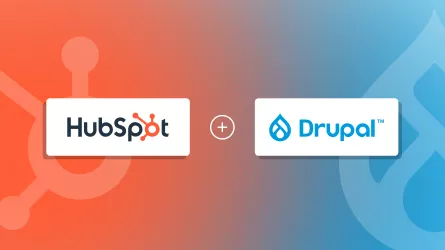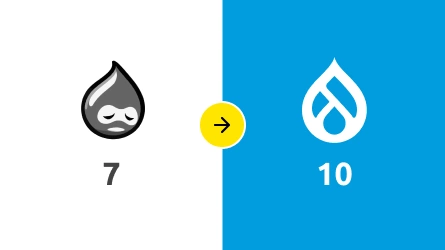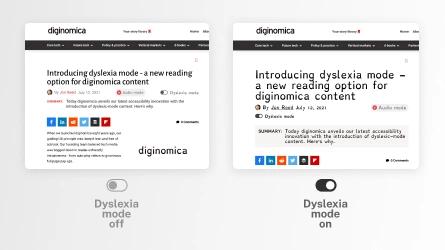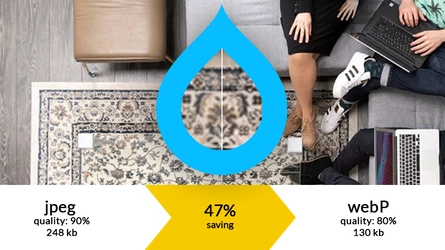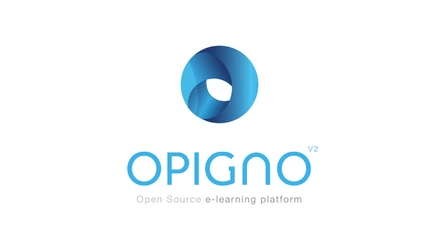HubSpot describes itself as ‘the worldwide leader in inbound marketing, sales, and customer service/support training.’ It is a very popular CRM solution. In mid-2022, HubSpot's API and Drupal were disconnected, leaving hundreds of customers without a connection between their website and CRM due to a conceptual change in HubSpot’s new API.
We found ourselves among those struggling with this change. Driven by our commitment to open-source solutions and sustainable practices, we rose to the occasion and lent a hand to the Drupal community by creating a working integration module.
The still widely used 7th version of the Drupal CMS reached End Of Life on January 5, 2025, now all Drupal 7 sites are potentially vulnerable as they don't receive any security updates. The technology stack powering Drupal 7 sites is usually outdated, so keeping Drupal 7 sites in production is becoming more and more risky and painful which is very understandable in the light of the age of Drupal 7: it was released first in 2011!
This post outlines our process of upgrading Drupal 7 sites to Drupal 10 or 11.
Dyslexia, a lifelong disorder, makes reading/spelling a challenge for about 10% of the population (according to The British Dyslexia Association (BDA)). The disorder impacts accurate and fluent word reading and spelling.
We are believers of the well-known phrase “performance is a feature”. Performance influences engagement, conversion rates, and should be considered inseparable from the general user experience. Speed is also a ranking factor in Google. On a professional level, we need to take performance optimization seriously while keeping the focus on delivering business value. Without standard metrics and tools, performance optimization can easily become an endless journey in which you can only stop but never reach your destination. Recently, we’ve done a thorough review of our standards, internal goals, and tools to measure web performance.
Back in 2019, one of our digital partners, SwissTomato, brought us a new and exciting opportunity. We were challenged with implementing a new notification system for the website of GLAD network (gladnetwork.net). The GLAD Network (The Global Action on Disability Network) coordinates with bi- and multilateral donors for the inclusion of persons with disabilities in humanitarian action and international development.
WebP is the most supported next-generation image format. The average WebP file size is 25%-34% smaller compared to JPEG file size at similar quality. WebP offers all key features, that until now have only been available only through a variety of image formats such as JPEG, PNG and GIF.
You will now come across a slightly different kind of writing style on this blog, as you can now get to know Opigno, the online learning management software based on the Drupal content management system through the eyes of an expert who is not a developer and comes from outside the Drupal world completely. Opigno is a response to an educational need, and you need to know its history and future. The world is changing at a relentless pace, our opportunities are becoming wider and more diverse. My name is Anett Pónya, I hold a master’s degree in Educational Science and I’m also a certified Google Educator.
Update: Drupal 8 is EOL and Drupal 9 will be EOL in November 2023, thus Drupal 10 is the go-to version for all new projects. Drupal 7 will receive limited security support until January 5, 2025, but that's a very old software, if you are still on Drupal 7, start the upgrade process.
There are 3 supported major versions of the Drupal CMS. This is not an easy situation for many decision-makers. We’ve been working with Drupal since core version 4. Let’s break down the differences between these three different versions of the Drupal CMS to help you better understand what fits your needs and gives you the best opportunity to have an effective website that delivers you value.
We are experienced in building DAM (Digital Asset Management) platforms using the open-source Drupal 8 CMS. We have developed a distribution, meaning it’s quick and painless to set up. Our latest achievement is to plug our DAM to the relatively inexpensive and reliable AWS S3 or Spaces storage services to store terabytes of images, videos, or other types of media assets.
The year 2019 went pretty well in BRAINSUM. We’ve worked a lot, and learned a lot. We've now gained expertise using innovative technologies offering lots of business potential for our clients.
In this post I’d like to briefly introduce how can we bring even more value to our Clients in 2020 with PWA, SPA, Accessibility, REMP, Integrations and Open Source.
